Abstract
Clonal cell lines from a pituitary hormone-dependent rat mammary carcinoma were established. The growth of these cell lines in vitro is markedly stimulated in the presence of prolactin. The cells grow well in a medium supplemented with fetal-calf serum (generation time: 9-10 hr), but do not grow with calf serum. Fetal-calf serum supports little growth when the serum is subjected to anti-prolactin-affinity chromatography. Gel filtration of fetal-calf serum indicates that the growth stimulatory activity is in a large molecular weight material (close to 100,000), suggesting that prolactin is associated with another serum component. A variant of the original tumor, which does not require hormone for growth, was obtained, and clonal cell lines of this tumor were also established. These cells, in contrast to the hormone-dependent ones, grow well with either fetal-calf serum (with or without anti-prolactin treatment) or calf serum.
Keywords: pituitary hormone, fetal-calf serum
Full text
PDF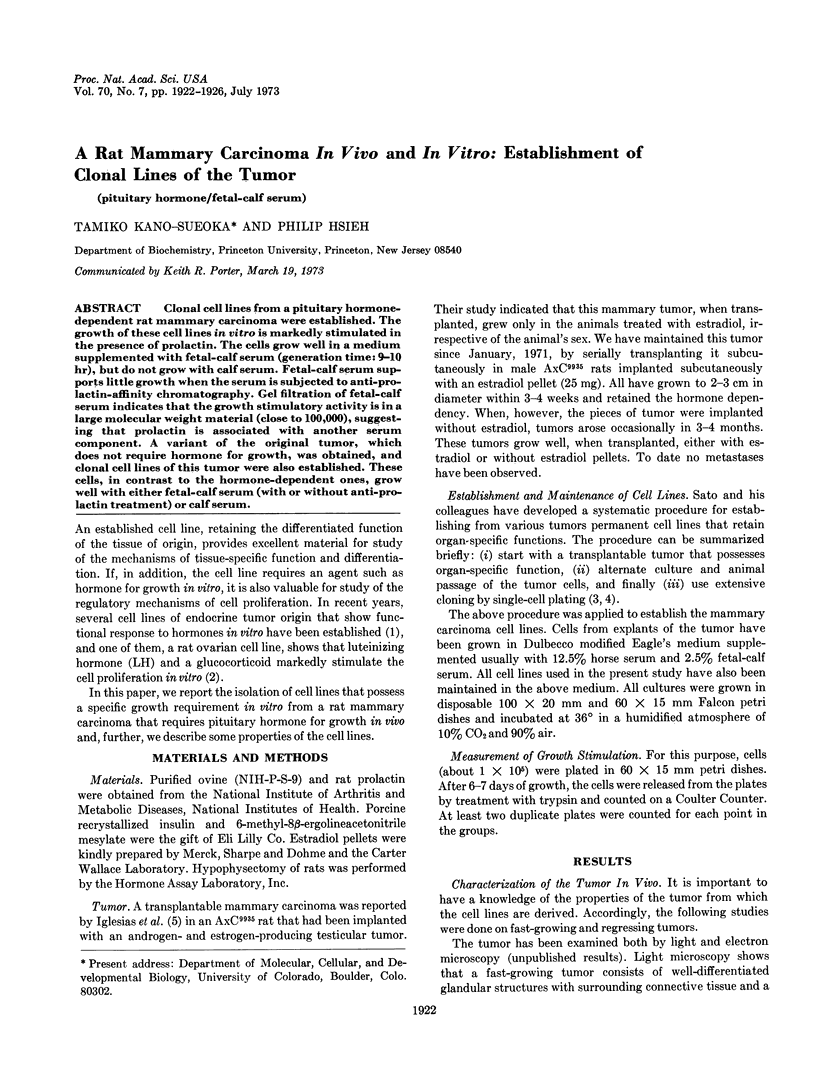
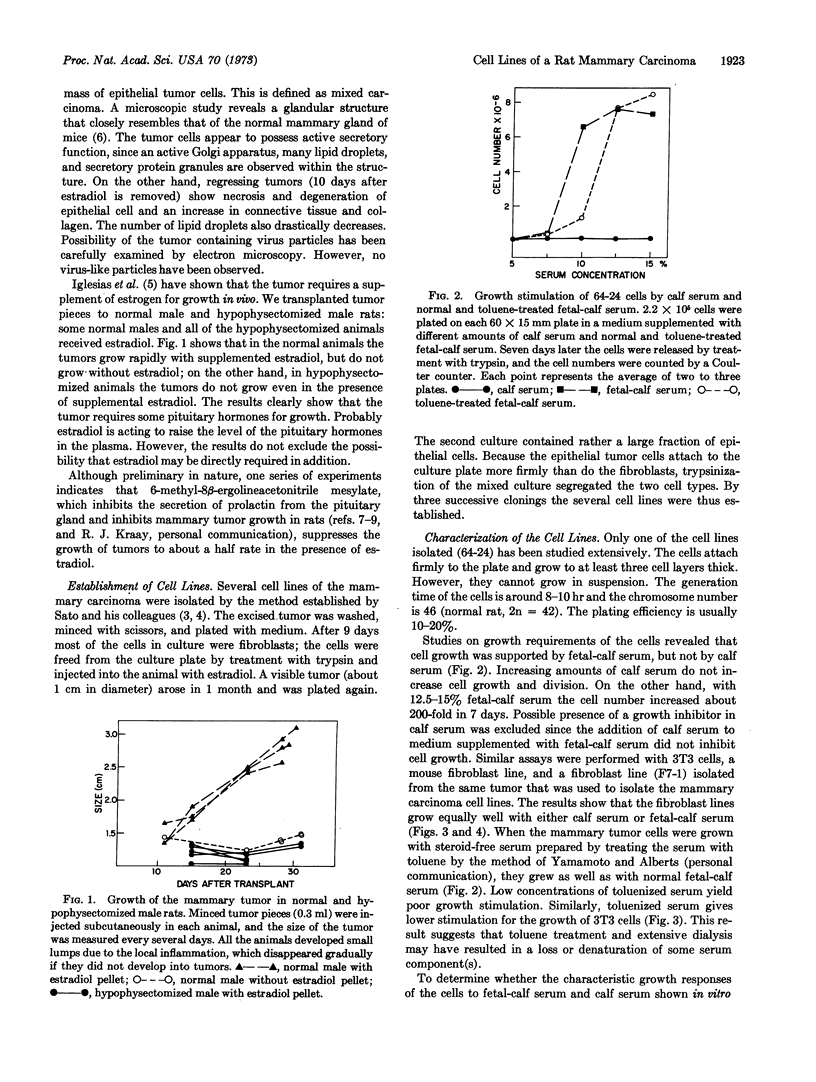
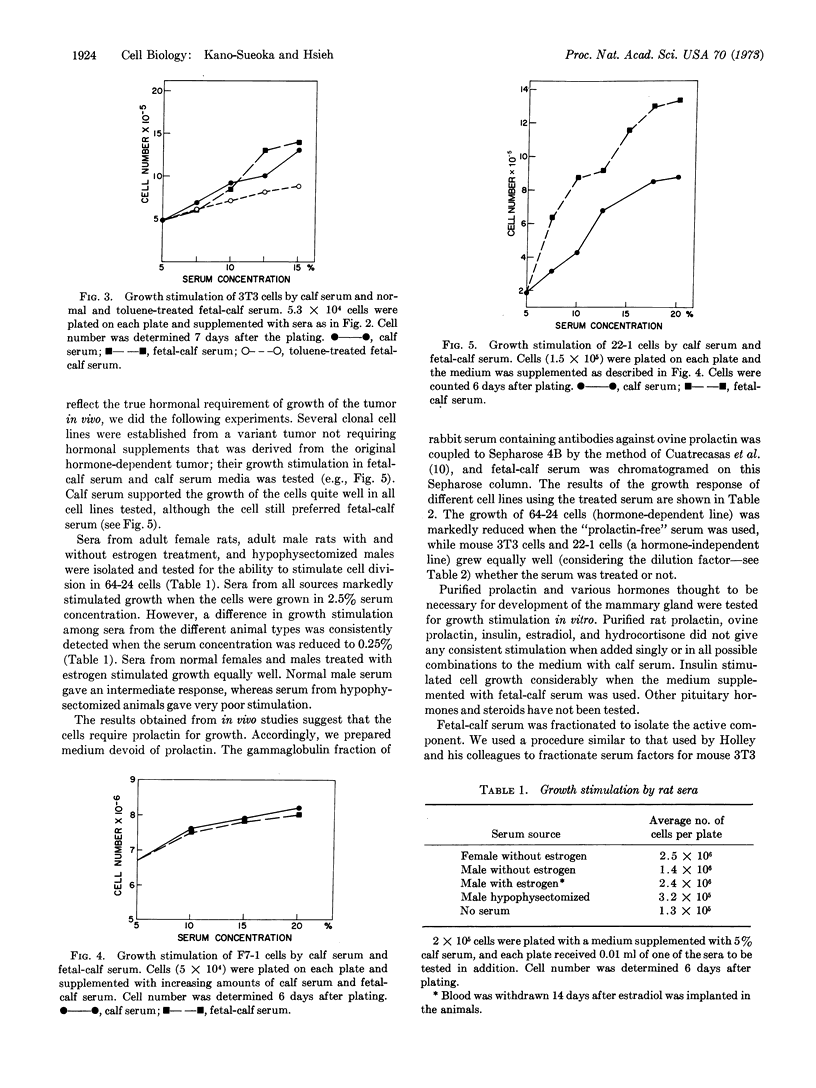
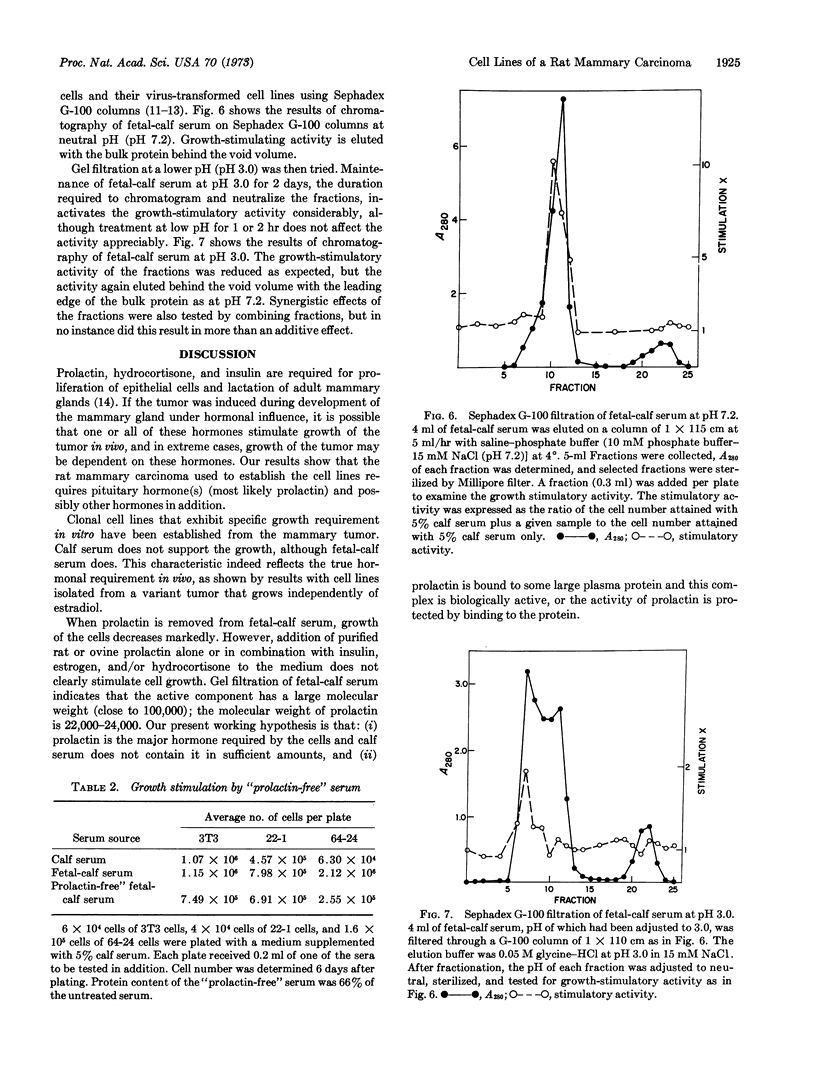
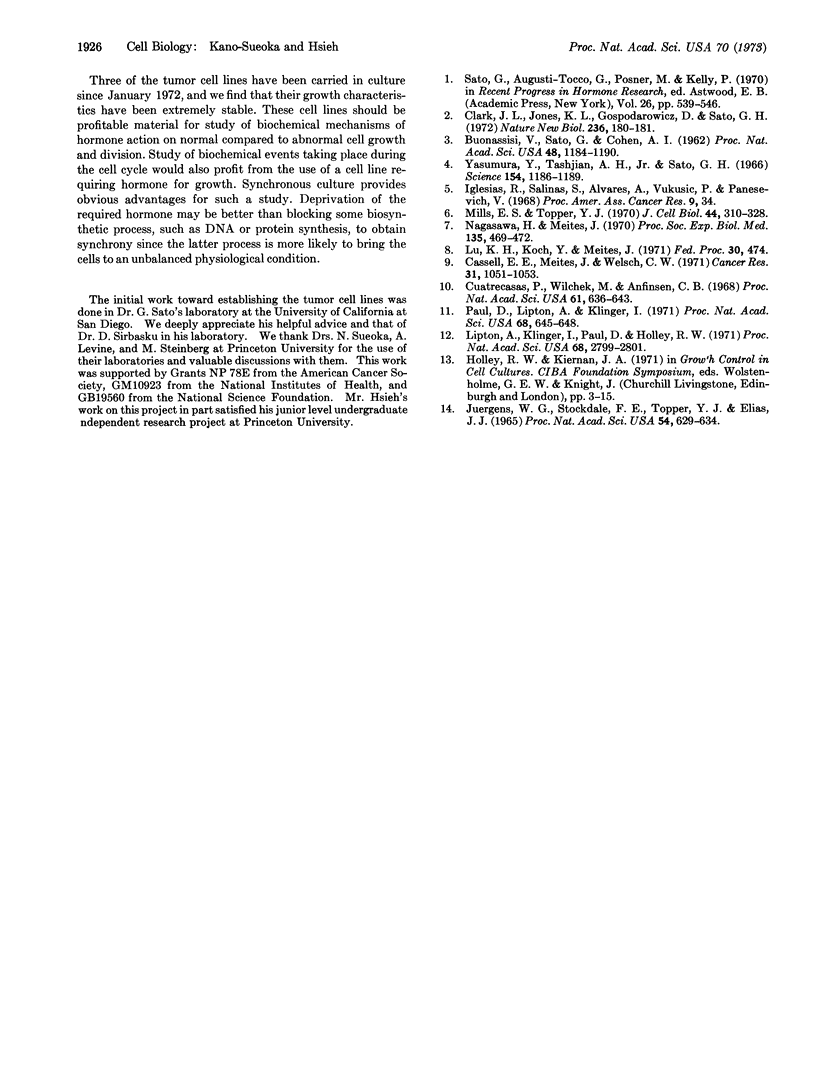
Selected References
These references are in PubMed. This may not be the complete list of references from this article.
- BUONASSISI V., SATO G., COHEN A. I. Hormone-producing cultures of adrenal and pituitary tumor origin. Proc Natl Acad Sci U S A. 1962 Jul 15;48:1184–1190. doi: 10.1073/pnas.48.7.1184. [DOI] [PMC free article] [PubMed] [Google Scholar]
- Cassell E. E., Meites J., Welsch C. W. Effects of ergocornine and ergocryptine on growth of 7,12-dimethylbenzanthracene-induced mammary tumors in rats. Cancer Res. 1971 Jul;31(7):1051–1053. [PubMed] [Google Scholar]
- Clark J. L., Jones K. I., Gospodarowicz D., Sato G. H. Growth response to hormones by a new rat ovary cell line. Nat New Biol. 1972 Apr 12;236(67):180–181. doi: 10.1038/newbio236180a0. [DOI] [PubMed] [Google Scholar]
- Cuatrecasas P., Wilchek M., Anfinsen C. B. Selective enzyme purification by affinity chromatography. Proc Natl Acad Sci U S A. 1968 Oct;61(2):636–643. doi: 10.1073/pnas.61.2.636. [DOI] [PMC free article] [PubMed] [Google Scholar]
- Juergens W. G., Stockdale F. E., Topper Y. J., Elias J. J. Hormone-dependent differentiation of mammary gland in vitro. Proc Natl Acad Sci U S A. 1965 Aug;54(2):629–634. doi: 10.1073/pnas.54.2.629. [DOI] [PMC free article] [PubMed] [Google Scholar]
- Lipton A., Klinger I., Paul D., Holley R. W. Migration of mouse 3T3 fibroblasts in response to a serum factor. Proc Natl Acad Sci U S A. 1971 Nov;68(11):2799–2801. doi: 10.1073/pnas.68.11.2799. [DOI] [PMC free article] [PubMed] [Google Scholar]
- Mills E. S., Topper Y. J. Some ultrastructural effects of insulin, hydrocortisone, and prolactin on mammary gland explants. J Cell Biol. 1970 Feb;44(2):310–328. doi: 10.1083/jcb.44.2.310. [DOI] [PMC free article] [PubMed] [Google Scholar]
- Nagasawa H., Meites J. Suppression by ergocornine and iproniazid of carcinogen-induced mammary tumors in rats; effects on serum and pituitary prolactin levels. Proc Soc Exp Biol Med. 1970 Nov;135(2):469–472. doi: 10.3181/00379727-135-35076. [DOI] [PubMed] [Google Scholar]
- Paul D., Lipton A., Klinger I. Serum factor requirements of normal and simian virus 40-transformed 3T3 mouse fibroplasts. Proc Natl Acad Sci U S A. 1971 Mar;68(3):645–652. doi: 10.1073/pnas.68.3.645. [DOI] [PMC free article] [PubMed] [Google Scholar]
- Sato G., Augusti-Tocco G., Posner M. Hormone-secreting and hormone-responsive cell cultures. Recent Prog Horm Res. 1970;26:539–546. doi: 10.1016/b978-0-12-571126-5.50017-0. [DOI] [PubMed] [Google Scholar]
- Yasamura Y., Tashjian A. H., Jr, Sato G. H. Establishment of four functional, clonal strains of animal cells in culture. Science. 1966 Dec 2;154(3753):1186–1189. doi: 10.1126/science.154.3753.1186. [DOI] [PubMed] [Google Scholar]


